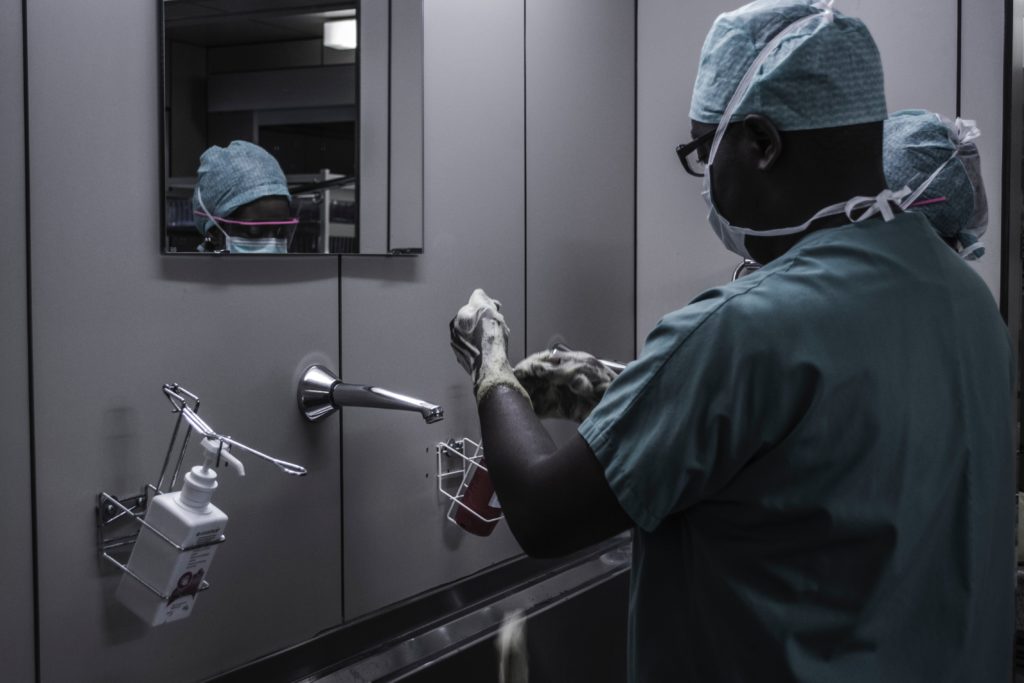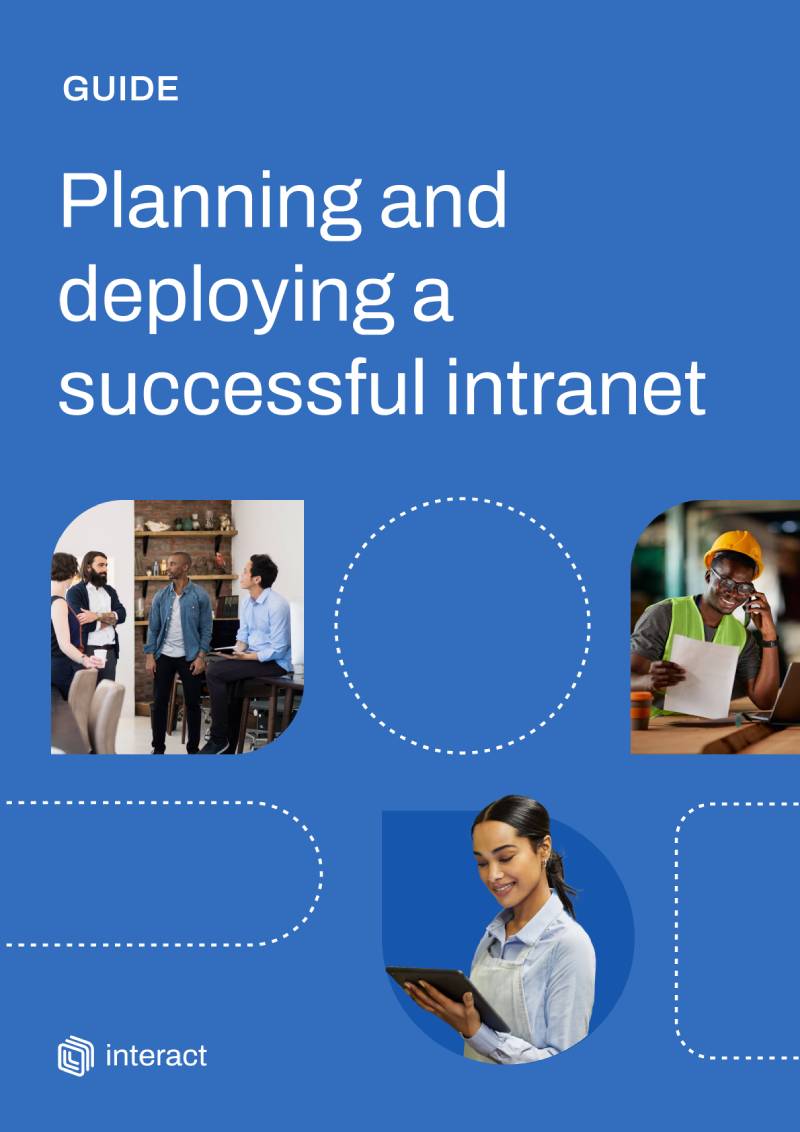Building and launching an intranet is a huge undertaking at the best of times. But in a pandemic, with en masse remote working, restricted working conditions, and pressing challenges, is it possible to not only go live with this kind of platform but also make it a success? Yes, if you ask the University of Kentucky HealthCare (UKHC) whose system, The Loop, launched in September 2020 – to much acclaim.
The average healthcare organization is a complex structure. There are the patient-facing staff – doctors, nurses, and allied health professionals – and there are the support and administrative staff who support the day-to-day running of the organization. Many points during the day are literally life-or-death situations for many of the employees. The tools and tech used by these workers need to support them, the decisions they make, and the knowledge they need to make their workplace as safe and efficient as possible.
UKHC has a collective mission: to provide the most advanced patient care, serve as an information resource and strengthen local health care. They define vision as, “to create a healthier Kentucky,” would require a review of the tools, tech, and processes they were operating under, to reassess what could be done better. Huge change was underway, and as a result, improving communication, information, and knowledge-sharing were of fundamental importance.
Jan Taylor, Director Corporate Communications, and Jan Carrico, Digital Workplace Comms Manager, had long realized this need to connect and engage the workforce. And with plans to implement huge growth and rapid change throughout the organization, this was now a pressing need.
Communicating change

Any significant change within a business requires a great deal of work in keeping the workforce informed. It is an organization’s responsibility to provide one source of truth for any news, internal or external, that could affect the business and the careers within. With a roadmap in place, thoughts started turning to digital tools that could foster this culture of communication.
“One of our first objectives being to try and engage the workforce to what was going on as we were going through rapid change,” says Taylor. “But initially, we weren’t even thinking about an intranet.”
Over the next few years, the team looked around for the right software for their community. While some products seemed to tick the boxes, the expense and stakeholder response saw potential solutions rejected.
Tasked with improving your internal comms?
“We needed to communicate more effectively, but that didn’t resonate with the people who were in charge of approving the spending. We continued for a long while with one single person in charge of internal communications. We had a newsletter, and we sent blast email… that was largely the extent of our communications.”
But in 2015, the marketing department was reorganized, and a separate group – a corporate communication team – was formed to tackle the problems around organizational communication in the business.
With their search for the right software continuing, this move narrowed their focus. Soon, Carrico, Taylor, and the team started searching for an internal communication platform that would not only serve the corporate communication team, but also managers and employees too.
Embracing change

With their chief objective to improve employee engagement, UKHC came on board with Interact in early 2020.
But then the pandemic happened. This cataclysmic event became a huge symbol for the change that the organization was making.
With engagement being high up the agenda, the team set up an employee advisory council, which they would use as a sounding post throughout the intranet build process. The council would put forward their opinions on what would make them use – and not use – the new platform.
With the intranet build in motion, conversations began regarding how the new system would be introduced to the workforce. Should it be an overnight switch or something more staggered? The board representing the workforce was firmly in favor of embracing the new system straight away. The intranet team was a little more hesitant.
“In a healthcare environment, there is a huge sense of not doing anything that could cause harm – not changing anything hastily, or doing something that people will not understand or cause them to make a poor decision around patient care… All the while they (the council) encouraged us to be bolder than what we were proposing to be.
“We were very cautious, from the viewpoint of changing something that people were using for something new, and how quickly we were going to make that change. The people encouraged us to rip off the Band-Aid and get the platform implemented as quickly as possible.”
While it was a good sign to the team that the workforce wanted to start using the intranet as quickly as possible, it didn’t happen that way. “That sense of caution existed in the leaders above us as well,” says Taylor. “They wanted to play it safe, so we took the slow approach.”
In hindsight, planning a phased intranet launch campaign was probably a prudent choice. At this point, the US was in the throes of the pandemic, and as a healthcare provider, UKHC needed to progress with caution.
Carrico comments, “We were in the middle of a pandemic, so in June we were rolling out the EHR (UKHC’s new electronic health record drive), which added to the caution. There was so much change already: with COVID, the closures of many different areas within the healthcare system, and then the gradual opening up, and then the vaccine roll-out. With this much change, as much as we wanted to ‘rip off the Band-Aid’, the environment was just too complicated for that type of action.”
Why Interact?

No two intranets are the same, and there are countless different reasons why an organization chooses an intranet software provider. In this instance, UKHC saw a synergy with Interact from the very beginning.
“We really liked that Interact was providing strategic support as part of their professional services – there was a real motivation there to make us successful.”
This strategic support ran from the very beginning of the build to post-launch, “In the presentation, I recall one of the things that made Interact stand out was this strategic approach. Rather than figuring out how to implement the software, we went through a process of outlining what our objectives are. This is a process which we go through ourselves, so we found it very appealing.”
“There was a real motivation there to make us successful.”
The plan was drawn up. The content management system would target communications and overcome email overload within the system. Integrations would link to the array of SharePoint sites that were already in use. The robust search capabilities were required to connect to important resources. And most importantly, they needed the new intranet to establish a two-way dialogue.
“We wanted feedback opportunities. Over the course of our journey, we’d gone from pushing a lot of information downwards to needing to hear from our teams. We needed functionality to be able to help our teams provide feedback to each other and to leadership.”
This steady feedback loop, and the use of intranet analytics, would identify popular content, pinpoint issues, and continually measure intranet effectiveness.
The next challenge was to forge a working relationship between comms and IT.
Relationship with comms and IT

Usually, the introduction of IT into an intranet project can be a sticking point. They are usually brought in at a later stage, and traditionally risk-averse, they scrutinize the product for problems, loopholes, and weaknesses. IT can therefore gain a reputation of slowing down projects, identifying issues that don’t exist, and creating a drag on something that has gained momentum. From their perspective, they are simply ensuring that the new software integrates with the current tech stack and doesn’t create complications further down the line.
But with UKHC, there was no friction. The team had spent so long researching the right tech that it had already taken on the thoughts and opinions of IT. Carrico responds, “All it took was for us to say, we have a problem, and we want to solve it, and I can also see you have a problem that needs to be solved too, so why don’t we work together?”
Tasked with improving your internal comms?
The legacy platform within the business was complex and unwieldy. IT was responsible for it, and so well versed in its various issues. They were in charge of this single homepage which had links to many different documents in wide-ranging locations (“over 200 different locations,” Carrico adds). Despite being responsible for it, they had no control over what people were doing with it, and they recognized how important it was to have some form of centralized control.
As a result, it was having similar objectives that helped both parties agree to fixing the issue. They saw that the new system would come with guidelines, rules, and policy – all of which did not exist before – and IT welcomed this order and control.
Project planning: strategy

2020 saw a pandemic, various departmental closures, reconfigured ways of working, the EHR project… it wasn’t great timing for building and launching a transformational intranet. Despite the clear pressures on the team, they carried on regardless.
“In the RFP process, we heard that Interact could pull it all together in four months, which aligned with the launch of the EHR project in June. We knew that would be quite a push – even without a pandemic – but we knew we could do a phased rollout, so that was our initial goal.”
With a tight schedule, the team worked out what they needed to pull together for their MVP – Minimal Viable Product. This was a version of the intranet that wouldn’t have had the complete range of features but had enough functionality to be considered launchable and support the EHR project.
“I remain amazed that we were able to get the platform up within six months.”
This type of strategy and a flexible attitude to tasks allowed the team to progress despite the unprecedented circumstances they were working within.
The team also identifies the support and dedication of the stakeholders involved in the project. “The strategic planning helped a lot, and the MVP allowed us to establish what we needed to do to launch. But our key content stakeholders were working under a high degree of pressure, with the EHR project, working in a pandemic, and dealing with rapid change, so I remain amazed that we were able to get the platform up within six months.
“Many of the stakeholders would be involved at the beginning, but then would – for one reason or another – be forced to drop out. But then, because of their dedication to the project, they would come back in later, and this is down to the flexibility of our planning and the support of Interact.”
Imperfect action is better than perfect inaction

The Loop was created in a very unusual climate. The electronic health record program was always going to be monumental for the organization – and would require a huge amount of resources to get right. Throw in a pandemic and an equal need to build and launch an intranet, and the workload on the team at times must have been overwhelming. How did they manage to pull it all together in six months?
“We were in two pretty large change management events – with our electronic health record and a pandemic, and as a result, we quickly realized that we could only do our best, be very flexible, and not let trying to reach perfection get in the way of making good improvements and getting – partially – what we wanted. So that was our lesson.
“I don’t think I’d recommend people trying to implement an intranet in the middle of a pandemic, but we just felt it was so critical to us that we felt there was no choice but to move forward.”
Tasked with improving your internal comms?
But there was one disappointment. Initially, the plan was to run two parallel projects: the implementation of the Interact platform and the development of the master data hub, or ‘People Hub’, which were created to complement each other and move at the same pace.
The Hub was to act as UKHC’s source of data, but early on in the project, the team was told that because of complications with the EHR, that this would be delayed. This Hub is still in process, however, and will be introduced in the near future.
How to achieve user adoption in a lockdown

Despite the challenges of 2020, there was a lot of engagement around the launch of The Loop. This was, in no small part, down to the great effort from the team to raise awareness of the product and create excitement within the workforce.
Employees received direct mail to their homes informing them of the intranet launch and details on a treasure hunt, a fun challenge that would encourage people to log on to the new system with the promise of a prize draw.
“As part of the treasure hunt, we gave out Kindle Fires to people who were first to complete their profile. We were driving employees to the People Directory, which was a key piece of functionality.”
And amid strict COVID regulations, the team organized a Launch Day, setting out tables and giving out items to spur people on to downloading the mobile app.
It was, as the team called it, “a campaign of persuasion”: making The Loop as appealing as possible and ensuring it had everything employees need. In the background, conscious of their soft launch, the team was working at getting as many people on to the new platform and gradually making the old resources harder to access.
“But at the same time, we’ve had to be very careful not to interfere too much with people’s normal routine with how they find things,” says Taylor. This moving away from the old way of doing things had to be done slowly and carefully, but in the meantime, The Loop was gaining momentum.
“Regardless of the soft launch, there has been a steady growth in adoption and engagement since launch. Our original goal was a workforce adoption that was equivalent to our blast emails’ average opening rate, which was 35%. In September, when we launched, we had a 7% user adoption. Today we’re at 52%. That, to me, shows that we’re doing something right.
“And we continue to promote the platform. For example, we had three storm warnings here recently in Kentucky, so we took advantage of that situation with our weather alerts, encouraging staff to logon to the intranet to find out more.”
What’s next?

As any intranet project leader knows, the intranet launch isn’t the finish line, it’s just a milestone, and a successful system evolves and adapts with the business. The Loop has proved to be a hit with the workforce and, according to Carrico, continues to be relevant in the most unexpected ways.
“I was in a leadership training call with another lady who was on the clinical side of our main operating room. She learned that I was working on The Loop, and she had a lot of great things to say, especially on the look and feel of the new platform.”
This co-worker began to describe communication problems within her own department and wondered whether the platform could solve these issues. This conversation highlighted to Carrico new ways of promoting The Loop to different groups of people.
“If your intranet solves people’s problems, you get engagement”
“We identified her needs and are now about to conduct a pilot with them and change their default browser to The Loop, moving away from the traditional homepage. We’re also piloting the use of MS Teams to move away from email.”
Beyond the analytics that displays month-on-month increases in users and engagement levels, this is an example of anecdotal success and symptomatic of how the organization has embraced the Loop.
“It’s very encouraging and promising – and we’re solving problems. And when you solve a problem, you get engagement. I think the fact we can solve people’s work problems is the key to our intranet and its continued success.”



